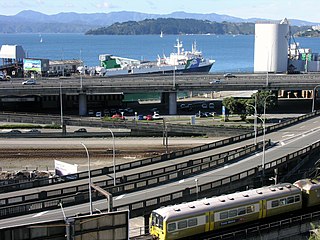
Transport in New Zealand, with its mountainous topography and a relatively small population mostly located near its long coastline, has always faced many challenges. Before Europeans arrived, Māori either walked or used watercraft on rivers or along the coasts. Later on, European shipping and railways revolutionised the way of transporting goods and people, before being themselves overtaken by road and air, which are nowadays the dominant forms of transport. However, bulk freight still continues to be transported by coastal shipping and by rail transport, and there are attempts to (re)introduce public transport as a major transport mode in the larger population centres.
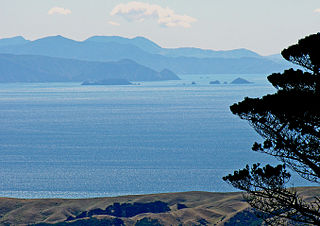
Cook Strait separates the North and South Islands of New Zealand. The strait connects the Tasman Sea on the northwest with the South Pacific Ocean on the southeast. It is 22 kilometres (14 mi) wide at its narrowest point, and is considered one of the most dangerous and unpredictable waters in the world. Regular ferry services run across the strait between Picton in the Marlborough Sounds and Wellington.
Tranz Rail, formally Tranz Rail Holdings Limited, was the main rail operator in New Zealand from 1991 until it was purchased by Toll Holdings in 2003.

Rail transport in New Zealand is an integral part of New Zealand's transport network, with a nationwide network of 4,375.5 km (2,718.8 mi) of track linking most major cities in the North and South Islands, connected by inter-island rail and road ferries. Rail transport in New Zealand has a particular focus on bulk freight exports and imports, with 19 million net tonnes moved by rail annually, and 99.5% of New Zealand's exports and imports being transported through the country's seaports.
Tranz Metro was a New Zealand public transport operator. Beginning as the New Zealand Railways Corporation's Cityline division as a result of restructuring in the 1980s, in its final form Tranz Metro was the operator of Metlink's suburban trains owned by the Greater Wellington Regional Council in the Wellington Region of New Zealand.
StraitNZ is a New Zealand transport firm that operates roll-on/roll-off freight and passenger shipping across the Cook Strait, between Wellington in the North Island and Picton in the South Island, as well as trucking and logistics services across New Zealand.

MV Kaitaki is a roll-on/roll-off ferry built in 1995. It previously operated under the names, Isle of Innisfree, then Pride of Cherbourg, Stena Challenger and Challenger. As of 2008, MV Kaitaki was the largest ferry operating the Interislander service between the North and South Islands of New Zealand having taken her latest name in 2007. KiwiRail, the operator of the Interislander service, bought the Kaitaki in 2017.

DEV Arahura was a roll-on/roll-off train ferry that operated on the Interislander service between Wellington and Picton in New Zealand from 1983 until 2015.

GMV Aramoana was a roll-on/roll-off train ferry operating across Cook Strait between 1962 and 1983.

Interislander is a road and rail ferry service across New Zealand's Cook Strait, between Wellington in the North Island and Picton in the South Island. It is owned and operated by state-owned rail operator KiwiRail. Three roll-on roll-off (RORO) vessels operate the 50-nautical-mile route, taking about three hours to complete the crossing.
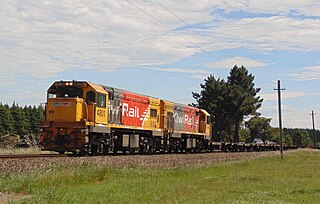
The New Zealand DC class locomotive is a type of diesel-electric mainline locomotive on the New Zealand rail network, operated by KiwiRail on freight trains, and formerly on long-distance passenger trains. The class was rebuilt from the DA class in the late 1970s and early 1980s, mainly in Australia. After the DA class, they were the most numerous class of diesel locomotive on New Zealand's railway network and remained numerically dominant until the mid-2010s when withdrawals began.
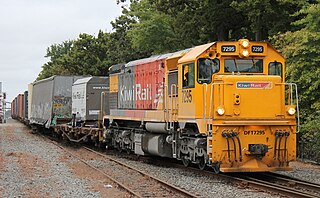
The New Zealand DF class locomotive of 1979 is a class of 30 Co-Co diesel-electric locomotives built by General Motors Diesel of Canada between 1979 and 1981. Between 1992 and 1997, all the locomotives were rebuilt as the DFT class, a turbocharged version of the DF.

The Main North Line, sometimes referred to as part of the South Island Main Trunk railway, is a railway line that runs north from Christchurch in New Zealand up the east coast of the South Island through Kaikōura and Blenheim to Picton. It is a major link in New Zealand's national rail network and offers a connection with roll-on roll-off ferries from Picton to Wellington. It was also the longest railway construction project in New Zealand's history, with the first stages built in the 1870s and not completed until 1945.
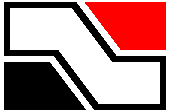
New Zealand Railways Corporation (NZRC) is the state-owned enterprise that owns the land beneath KiwiRail's railway network on behalf of the Crown. The Corporation has existed under a number of guises since 1982, when the old New Zealand Railways Department was corporatised followed by deregulation of the land transport sector. In 1986, the Corporation became a State-owned enterprise, required to make a profit. Huge job losses and cutbacks ensued, and the rail network, rail operations and ferry service of the Corporation were transferred to New Zealand Rail Limited in 1990. The Corporation retained ownership of the land beneath the railway network, and charged a nominal rental to New Zealand Rail, which was privatised in 1993, and renamed Tranz Rail in 1995. In 2004, following a deal with Tranz Rail's new owners Toll NZ, the Corporation took over responsibility for maintaining and upgrading the rail network once more, trading under the name ONTRACK. Negotiations with Toll over track access charges concluded after four years with no agreement reached, so the government purchased the entire rail and ferry operations, naming the service KiwiRail. ONTRACK's railway infrastructure and employees were then transferred to KiwiRail in 2008, which itself was initially a subsidiary of the Corporation. On 31 December 2012, the Corporation once again became the landowner.
CityJet was a short-lived New Zealand airline. It operated between May and November 1999.
KiwiRail Holdings Limited is a New Zealand state-owned enterprise (SOE) responsible for rail operations in New Zealand and operates inter-island ferries. Trading as KiwiRail and headquartered at 604 Great South Road, Ellerslie, KiwiRail is the largest rail transport operator in New Zealand. KiwiRail has business units of KiwiRail Freight, Great Journeys New Zealand and Interislander. The company was formed in 2008 when the government renationalised above-rail operations and inter-island ferry operations, then owned by Toll Holdings. In 2021, the government launched the New Zealand Rail Plan, with funding for rail projects to come from the National Land Transport Fund (NLTF), and with KiwiRail remaining an SOE but paying Track Access Charges (TACs) to use the network.

The New Zealand DL class of diesel-electric locomotives was manufactured for KiwiRail by CRRC Dalian with engines from MTU. They are the most powerful diesel-electric locomotives in service in New Zealand.

GMV Aranui was a roll-on/roll-off train ferry operating across the Cook Strait between 1965 and 1984.

MS Kaiarahi is a roll-on/roll-off ferry operated by Interislander on the Wellington to Picton interisland route between the North and South islands of New Zealand.

Great Journeys New Zealand is the tourism division of KiwiRail that operate its three Scenic train services. The new division was launched in May 2017 and replaced the former tourism brand KiwiRail Scenic Journeys. It has continuity with the earlier InterCity Rail (1987–1995) and Tranz Scenic (1995–2011).















